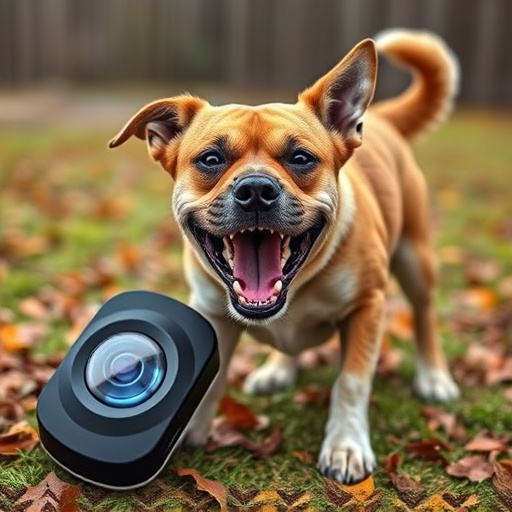Electronic dog repellers use high-frequency ultrasonic sounds detected by motion sensors to deter dogs from specific areas, with effective distance ranging up to 100 feet. This distance is influenced by the device's frequency (typically 25-50 kHz), environmental conditions, and power output while ensuring safety. The right balance of these factors allows homeowners to protect larger spaces like gardens or patios, making electronic dog deterrents a popular choice for comprehensive canine intrusion protection.
“Discover the power of dog repellers and their role in maintaining a peaceful environment. This article explores the technology behind these devices, focusing on the crucial element of frequency range. We delve into how specific frequencies can deter dogs effectively, ensuring optimal results without harm. Additionally, we examine factors that impact the coverage distance of electronic dog deterrents, guiding you towards the best solutions for your space. Maximize the effective distance of your electronic dog deterrent with our expert insights.”
- Understanding Dog Repeller Technology and Its Mechanism
- Defining the Effective Frequency Range for Optimal Deterrence
- Factors Influencing the Coverage Distance of Electronic Dog Detrents
Understanding Dog Repeller Technology and Its Mechanism
Dog repellers, also known as electronic dog deterrents, utilize specific sound frequencies to create an uncomfortable auditory experience for dogs, encouraging them to stay away from a particular area. These devices emit high-pitched tones that are often inaudible to humans but provoke a natural instinctive reaction in canines. The technology behind these repellents is designed to be effective within a certain distance, usually referred to as the “effective distance.” This range can vary depending on factors like the device’s power output and environmental conditions.
The mechanism involves picking up on dog movement using motion sensors, which then trigger the emission of the high-frequency sound. The tone is specifically tailored to be irritating or distressing to dogs without causing them harm. This technology has proven effective in keeping dogs away from unwanted areas, such as gardens or specific rooms in a house. An electronic dog deterrent with an extensive effective distance ensures that it can cover larger spaces and potentially protect more territory, making it a popular choice for homeowners aiming to keep their properties secure and free from canine intruders.
Defining the Effective Frequency Range for Optimal Deterrence
Defining the effective frequency range for an electronic dog deterrent is crucial in ensuring optimal deterrence over a specific distance. These devices emit sound waves or ultrasonic frequencies that are often above the human hearing threshold, targeting dogs’ sensitive auditory systems. The ideal frequency spectrum varies among products, but it generally falls within the high-frequency range of 25-50 kHz. This range has proven effective in repelling dogs without causing harm, as most breeds find these sounds unpleasant or even painful.
The distance at which a dog is deterred also depends on this frequency range. Longer effective distances, typically up to 100 feet (or more, depending on the model), can be achieved with well-designed electronic repellers. This allows pet owners to protect larger areas, such as gardens or patios, from unwanted canine visitors. By understanding the interplay between frequency and distance, users can select or adjust their dog deterrent for maximum efficacy within their desired coverage area.
Factors Influencing the Coverage Distance of Electronic Dog Detrents
The effective distance an electronic dog deterrent can cover is influenced by several factors, each playing a crucial role in determining its overall performance and coverage area. One primary factor is the specific frequency range employed by the device. Different dogs may have varying sensitivities to these frequencies, so a broader spectrum could be more effective in repelling a wider range of canines. Additionally, the environment itself has an impact; factors like terrain, obstructions, and weather conditions can affect signal strength and range. For instance, open fields allow for better transmission than dense forests or urban areas with tall buildings.
Another consideration is the power output of the electronic deterrent. Higher-powered devices generally have a larger effective distance as they can generate stronger signals. However, it’s essential to balance power with safety, ensuring the device doesn’t emit harmful levels of energy. The size and design of the area to be protected also matter; larger areas require more powerful and extensive coverage systems to ensure consistency in deterrence across the entire space.
In conclusion, understanding the effective frequency range of electronic dog deterrents is key to choosing a device that offers optimal deterrence. By navigating factors like power output and environmental conditions, users can maximize the coverage distance of these repellers, ensuring their pets remain in control spaces. An informed selection enhances both pet safety and overall quality of life for both animals and their owners.
